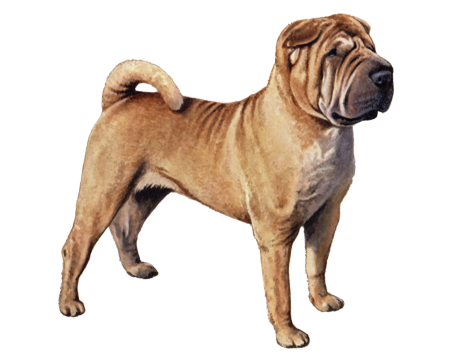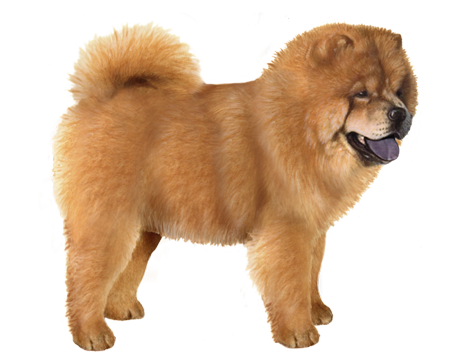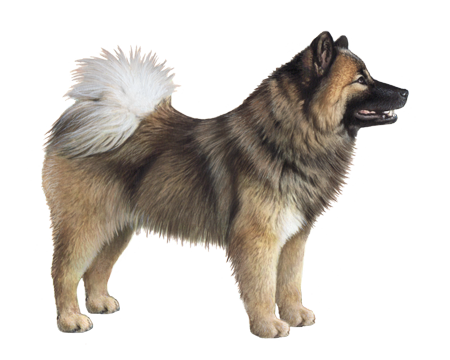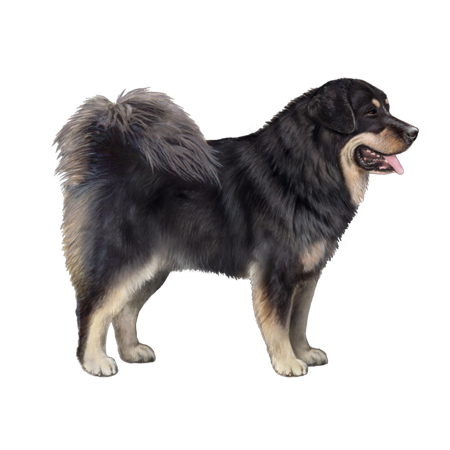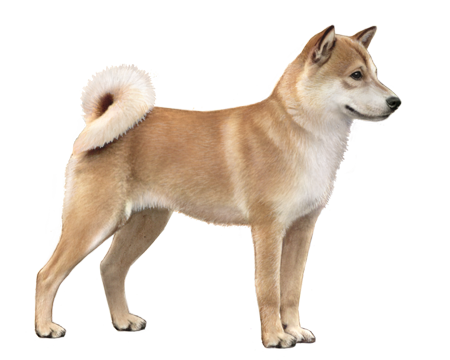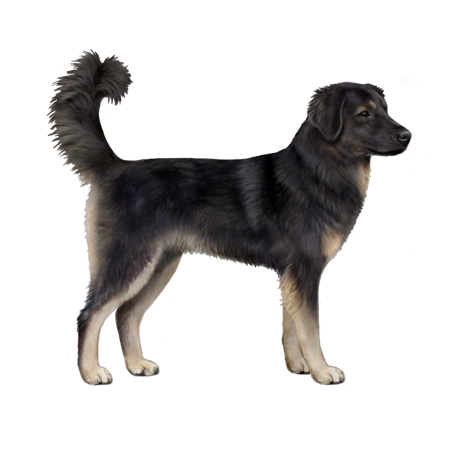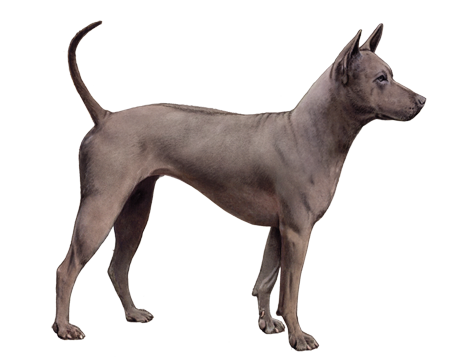
Northern Inuit Dog
Northern Inuits have the rugged good looks of a wolf and the happy, friendly temperament of a beloved family pet. They're intelligent dogs that form tight bonds with their humans. But they may not be the best breed for the novice pet parent.
Interested in discovering if your dog is a Northern Inuit Dog?
Check out Wisdom Panel's DNA tests.

Northern Inuit Dog Traits
General Appearance
Northern Inuits are medium-to-large dogs with an athletic build and wolf-like appearance.
Coat and Coloring
The Northern Inuit's dense, thick, double coat has a slightly coarse texture. It's 3-5 centimeters long on the body and longer on the ruff and breeches. This breed comes in various colors—including pure white, shades of grey, silver, black, and apricot. And some dogs have distinctive mask markings on the face.
Distinctive Physical Traits
Northern Inuits have slightly domed skulls, strong muzzles, flat cheeks, and triangular-shaped ears that are relatively wide apart and erect. Their oval eyes come in various colors, including yellow, amber, brown, and blue. Their tails are bushy and straight—never curly like a Malamute or Spitz.
Northern Inuit Dog Temperament
Intelligent, loyal, pack-oriented dogs, Northern Inuits love their humans and get along well with kids. These good-natured pups rarely show aggression and don't tend to bark. (They do sometimes howl.) Such qualities make them excellent pets but not-so-excellent guard dogs.
Northern Inuits often have a stubborn streak and may test the waters to see what they can get away with. So, they need a strong pack leader to establish house rules and keep them in check. These pups are also prone to separation anxiety. If left by themselves for long periods, they may turn to destructive behaviors. Crate training can be a helpful tool to keep your dog calm and safe when home alone.


Northern Inuit Dog History
The Northern Inuit is a relatively new dog breed. In the 1980s, breeders imported several dogs of unknown origin from North America to Britain with a specific goal. They sought to create a dog that resembled a wolf but had the temperament to be an eager-to-please family dog. They achieved this vision by crossing the imported dogs with breeds such as the Malamute, Siberian Husky, and German Shepherd.
For a few decades, the Northern Inuit breeding program existed exclusively in the UK and Ireland. But that changed in 2014 when the first litter of Northern Inuits was born in South Africa. Today, there are Northern Inuit breeders in South Africa, the United States, and Switzerland.
Awareness and interest in the Northern Inuit skyrocketed after the breed appeared as dire wolves in the popular TV series Game of Thrones. Though Northern Inuits haven't been accepted by the American Kennel Club or British Kennel Club yet, they are recognized by their own independent kennel clubs—the Northern Inuit Society (NIS) and the Northern Inuit Society of America (NISA).
Northern Inuit Dog Care
Nutrition
Northern Inuits thrive on a high-quality food formulated for their life stage (e.g., puppy, adult, senior). Some Northern Inuits have sensitive stomachs. Your veterinarian can help you find the best diet for your individual dog's needs.
Once you find the right food for your pup, take care to feed the correct amount to keep them at a healthy weight. You can achieve this by measuring portions to avoid overfeeding and limiting treats to no more than 10% of their daily calories.
Grooming
Northern Inuits require regular brushing to remove loose fur and keep their coats looking clean and tidy. During periods of seasonal shedding, they may need more frequent grooming sessions. Monthly nail trims should also be part of your dog's home care routine. Nails that get overly long can cause pain and potentially lead to problems running or walking.
Dental disease is one of the most common health conditions in adult dogs. Left untreated, it can contribute to other serious health issues. So, in addition to professional cleanings, establish an at-home dental care habit that includes regular teeth brushing and veterinarian-recommended dental chews.
Exercise
Northern Inuits are not inexhaustible balls of energy like some Northern breeds. But they do need daily exercise to stay fit. They seem to enjoy long walks and hikes with their people, as well as dog sports—such as agility, rally, and competitive obedience.
Training
Intelligent, independent thinkers, Northern Inuits respond best to someone who uses consistent and firm (but gentle) training techniques. This breed gets bored and impatient easily, so short and varied training activities are best. Lastly, early socialization can help your pup grow into a well-mannered adult dog.

Breed Group
Asian and Oceanian
The Asian and Oceanian group is comprised of breeds whose origins lie in Asia, which have spread as far as Australia, the islands of the Pacific, and the Arctic. This group is possibly the most ancient of all breed groups and were bred for a variety of purposes, including guarding, hunting, and as draft dogs.





